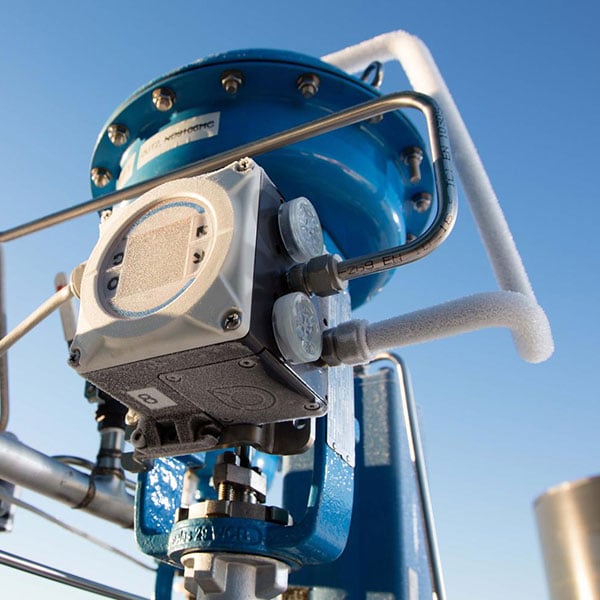
Maximize Power Savings and Convenience With Advanced Structure Automation Controls
In the world of contemporary design and facility administration, the integration of advanced building automation manages stands as a crucial development. The merging of innovation and sustainability has actually birthed a new age where power effectiveness, convenience optimization, and operational streamlining are no much longer far-off aspirations yet possible truths. By utilizing the power of automation, buildings can adjust, respond, and develop in methods that were when unbelievable. The possibility for substantial energy cost savings and improved comfort is not just an opportunity however a pledge waiting to be satisfied. This standard change in building monitoring holds the vital to unlocking a world where ecological conscientiousness and resident health harmoniously coexist within the wall surfaces of our frameworks.
Energy Performance Advantages
Power performance benefits can substantially minimize energy consumption and operational prices in structures. Energy-efficient systems, such as innovative structure automation controls, can enhance the usage of resources like illumination, heating, and cooling, leading to lower power costs over time.
Additionally, enhanced power effectiveness can extend the lifespan of structure equipment and systems. By operating more successfully, cooling and heating systems, light, and various other structure elements experience less deterioration, causing minimized maintenance and substitute prices. Furthermore, energy-efficient buildings often regulate higher property worths and rental prices, offering lasting economic benefits to owners.
Furthermore, energy performance can enhance passenger convenience and productivity. Appropriately managed indoor atmospheres with optimal lighting and thermal problems develop a more pleasant and conducive office, bring about boosted employee complete satisfaction and efficiency. In general, the power efficiency benefits connected with innovative building automation controls are multifaceted, including price savings, ecological stewardship, and occupant health.
Improved Comfort Control
Enhancing comfort control in building settings calls for a sophisticated integration of innovative automation systems for optimum owner well-being. By making use of innovative building automation controls, facilities can customize the interior setting to meet the specific demands and preferences of residents. control valves.
Improved comfort control exceeds fundamental temperature changes. It consists of functions such as individualized settings, tenancy sensors, and natural light utilization to produce a responsive and dynamic environment. By including these sophisticated controls, structures can not only boost convenience however likewise improve power performance by maximizing system operations based upon actual tenancy and usage patterns. Eventually, focusing on passenger comfort with advanced automation systems results in a more delightful and healthier interior environment.
Functional Performance Improvements

Furthermore, the implementation of real-time monitoring and analytics devices enables structure operators to recognize energy ineffectiveness and functional abnormalities immediately. By webpage continually keeping track of energy usage patterns and system efficiency metrics, adjustments can be made in real-time to enhance power intake and ensure peak functional performance. control valves. Furthermore, including demand feedback strategies right into structure automation controls can further enhance functional performance by dynamically readjusting energy usage based upon grid conditions and prices signals
Indoor Environment Optimization
Reliable indoor climate optimization is a basic aspect of building automation controls, making certain residents' comfort and health while taking full advantage of power financial savings. By utilizing sophisticated sensors and controls, building automation systems can constantly readjust and check temperature, moisture degrees, air high quality, and air flow to produce an optimal interior atmosphere. Maintaining comfy and constant problems not just boosts owner fulfillment however likewise boosts performance and general health.
Indoor climate optimization likewise plays a crucial duty in power efficiency. By fine-tuning cooling, heating, and ventilation systems based on real-time data and occupancy patterns, developing automation controls can substantially minimize energy consumption - control valves. For instance, applying methods such as demand-controlled air flow and thermal zoning can help lessen energy waste while guaranteeing that each area of the structure gets the necessary conditioning.

Sustainable Atmosphere Development
Structure automation regulates not only enhance interior environment conditions for energy effectiveness and passenger comfort but additionally lay the foundation for developing a sustainable atmosphere through calculated monitoring of systems and sources. By integrating sophisticated building automation modern technologies, such as sensors, actuators, and smart software, centers can keep track of and readjust power usage in real-time to reduce waste and reduce their more carbon impact. These systems enable predictive maintenance, recognizing potential problems prior to they rise and optimizing devices performance to enhance longevity and performance.
In addition, lasting atmosphere development expands past energy administration to include water preservation, waste reduction, and indoor air top quality renovation. Building automation controls can control water use, find leaks, and guarantee proper garbage disposal practices, adding to general sustainability initiatives. In addition, by managing and keeping track of air flow and filtration systems, these technologies boost owner health and wellness and efficiency while decreasing power usage related to cooling and heating procedures.
Verdict
To conclude, progressed building automation manages deal considerable advantages in regards to power financial savings, comfort control, operational performance, indoor climate optimization, and producing a lasting environment. By applying these controls, structures can achieve ideal efficiency while decreasing energy intake and enhancing owner comfort. It appears that the use of sophisticated automation technology is vital in improving structure performance and developing an extra sustainable future.
Power effectiveness advantages can considerably reduce power intake and operational prices in buildings. In general, the power efficiency benefits connected with sophisticated building automation controls are multifaceted, incorporating cost savings, ecological stewardship, and passenger health.
Additionally, incorporating need feedback approaches into building automation controls can better enhance functional efficiency by dynamically readjusting energy use based on grid conditions and prices signals.
Building automation regulates not just optimize indoor environment problems for energy effectiveness and resident convenience yet additionally lay the structure for producing look at here now a lasting setting via tactical administration of systems and resources.In verdict, progressed structure automation controls offer significant benefits in terms of power financial savings, convenience control, functional performance, interior climate optimization, and developing a sustainable atmosphere.